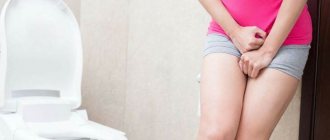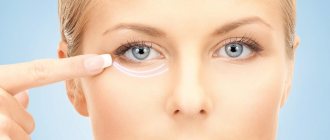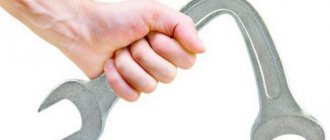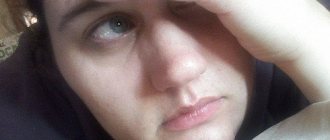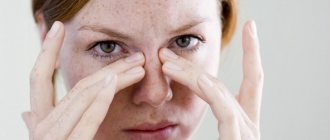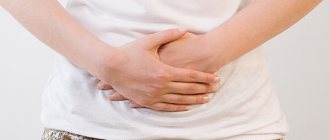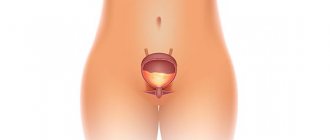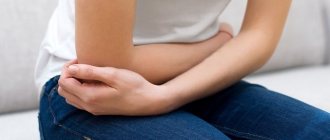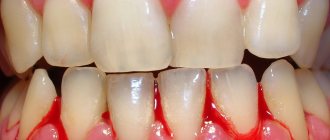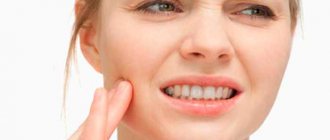Expert opinions vary regarding the normal number of urinations per day for a healthy person. On average, each person visits the toilet 6-10 times a day, and he can control the process of urination without much effort. It is believed that if the frequency of the urge to urinate exceeds 10 times a day, then this is a reason to pay attention to the condition of your body.
In many cases, frequent urination in women is not a pathology. If you drink a lot, especially when consuming medications and drinks that have a diuretic effect (alcohol, coffee, weight loss drinks), hypothermia or anxiety, the need to visit the toilet may occur much more often than usual.
An increase in the frequency of urination in a woman may be associated with hormonal changes in the body during menopause; in older women, there may be a need to urinate at night. At the same time, 1–2 trips to the toilet per night should not be considered pathological. And of course, this problem can arise during pregnancy. Frequent urination in expectant mothers is also associated with changes in hormonal levels in the body; in addition, in the later stages of pregnancy, an enlarged uterus can put pressure on nearby organs, including the bladder.
All the changes described above are considered physiological and usually do not require treatment, but you should still draw the doctor’s attention to this problem, since some diseases can also cause frequent urination. Sometimes it is possible to diagnose the pathology that is the cause of dysuric disorders only on the basis of the results of tests and instrumental studies.
If a woman’s increased frequency of urination is caused by some disease, then this condition is almost always accompanied by a number of other symptoms that are difficult to ignore.
Causes of frequent urination
There are several physiological explanations for frequent urination in women, which do not significantly affect the health of the fair sex, but provoke unpleasant symptoms:
- Excessive fluid intake. If a woman drinks a lot of coffee, tea, and other types of drinks, then she more often feels “the urge to have a small need”;
- Stressful situations. Depression, nervous breakdowns, and psychological stress, which are so relevant in our modern era of global urbanization and frantic pace of life, overly activate the body’s sympathetic system, causing various negative manifestations, including frequent urination;
- Unbalanced diet. Excessive consumption of salty, spicy and fried foods irritates a number of organs and systems, including the bladder;
- Taking medications. A number of medications have side effects in the form of urological spectrum disorders, including frequent urination;
- Menstruation. This regular physiological event is inextricably linked with the accelerated removal of fluid from the body due to hormonal changes;
- Elderly age. During the onset of menopause, the female body undergoes fundamental hormonal changes, one of the side effects of which may be increased urination;
- Pregnancy. In the early stages, frequent urges due to little need are explained by changes in hormonal levels. Starting from the 2nd trimester, the growing fetus itself comes to the fore, putting pressure on individual organs (including the bladder), which provokes frequent urination.
The above physiological causes are diagnosed in only 10–15 percent of patients who complain to a urologist or gynecologist with complaints of frequent urination. The provoking factors of the symptom in the rest of the fair sex are various pathologies - gynecological, urological, endocrine and other types of diseases.
Gynecological diseases
A typical cause of excessive urination, due to too tight mutual work of the woman’s urinary and reproductive systems. The most famous in this context are prolapse and uterine fibroids.
- Uterine prolapse. The prolapse of the main genital internal organ of a woman is caused by problematic conditions of the pelvic floor muscles, abdominal cavity and abdomen. They can have both a physiological (postpartum prolapse) and pathological nature. In this case, provoking factors are excessive physical activity, chronic constipation, and increased intra-abdominal pressure. Most often, frequent urination occurs due to prolapse of the anterior wall of the vagina and the corresponding part of the uterus - they put pressure on the bladder and urethra, causing pathologies with urination;
- Uterine fibroids. Benign tumors in the inner layer of the female smooth muscle organ can also provoke deterioration of the urinary system.
Kidney and urinary tract diseases
The most common cause of urinary disorders in women, regardless of age. The most common pathologies:
- Urolithiasis disease. Urolithiasis is the formation of stones in the urinary system. Most often diagnosed in patients aged 20 to 50 years, in an acute condition (with ureteral obstruction), in some cases requiring surgical intervention;
- Cystitis. Classic inflammation of the bladder. It can be acute or chronic, caused by both pathogenic microorganisms (the vast majority of cases) and tumors and stones in the genitourinary system. In women, this disease occurs much more often than in the stronger sex due to the wide and short urethra, through which the infection quickly enters the bladder;
- Urethritis. Inflammatory process of the urethra. Most often caused by bacteria or viruses that infect the inner walls of the urethra;
- Pyelonephritis. The inflammatory process in the renal tubular system is the most common disease of the nephrological spectrum, regardless of age and gender group. Representatives of the fair sex suffer from pyelonephritis six times more often than men.
Endocrine diseases
Endocrinological problems often cause polyuria syndrome - frequent and copious urination, when the daily dose of excreted fluid sometimes reaches 2-3 liters. The mechanics of this process is associated with a deterioration in the reabsorption of water in the renal tubules, resulting in a decrease in its absorption by the body as a whole. This pathology is characteristic of diabetes mellitus and diabetes insipidus.
- Diabetes insipidus. A rare syndrome associated with dysfunction of the pituitary gland or hypothalamus. The mechanism of the pathology is tied to a decrease in the production of vasopressin (peptide antidiuretic hormone), which results in the formation of prerequisites for frequent and copious urination. Diabetes insipidus is caused by tumors and metastases in the brain, disorders of the blood supply to the hypothalamus, pituitary gland and supraoptic-pituitary tract, primary tubulopathy, genetic predisposition;
- Diabetes. An endocrine disease associated with an absolute or relative lack of insulin production. One of its basic symptoms is frequent urination.
Which doctor should I contact?
Frequent urge to urinate in women causes serious inconvenience. However, they do not always indicate the presence of a disease. If no other symptoms appear and the frequency of trips to the toilet does not exceed 10-12 per day, there is no reason to panic. But painful urination in women cannot be ignored, so immediately contact a gynecologist, therapist or urologist. The specialist will determine what is causing the frequent trips to the toilet and, if necessary, select adequate treatment.
- Cystitis - symptoms in women, first signs of the disease
- Diet for ketoacidosis in children by day - permitted and prohibited foods for treatment and prevention
- Burning sensation in the urethra in men
Symptoms and signs of frequent urination
Frequent urination, as mentioned above, is a symptom of many diseases and physiological conditions. In some cases, this manifestation is accompanied by:
- Pain syndrome during the act of urination. The pain is often sharp, piercing, radiating to the rectum and neighboring organs;
- Incomplete emptying of the bladder. It can be subjective (by sensations) or true, when after the process of urination a woman still feels the urge to carry out the activity, while the urine itself is no longer released even with effort;
- Discomfort in the lower abdomen. May be accompanied by pain of unclear localization, most often mild or moderate, disappearing 10–20 minutes after the act;
- Bloody discharge in the urine. Usually characterizes the acute course of genitourinary pathology. At the initial stages of the disease they are present only in trace quantities; in advanced complications they are expressed in large clots visible to the naked eye;
- Decreased sexual desire. As a rule, inflammatory processes in the genitourinary area lead to a weakening of sexual desire and decreased libido;
- Nephrological symptom complex. If the kidneys are involved in the pathological process, the patient may experience a complex of symptoms characteristic of manifestations of this type - general intoxication, weakness, nausea with vomiting, convulsions, itching, discoloration of the skin, arrhythmia, etc.;
- Symptom complex of endocrinological type. Classic manifestations of diabetes are characterized by primary symptoms in the form of polyuria, polydipsia, polyphagia and sudden changes in body weight;
- Other nonspecific symptoms associated with the course of a particular disease, one of the manifestations of which is frequent urination.
Symptoms
In order to understand the reason for painful urination, pay attention to the accompanying symptoms and disorders. During physiological processes and diseases, specific symptoms may appear:
- Cystitis. The main sign that allows you to suspect cystitis is pain when urinating. Frequent and painful urges are a criterion for making such a diagnosis. In addition, inflammation of the bladder is accompanied by changes in the urine, the appearance of pain in the lower abdomen and along the urethra, which intensifies with urination.
- Pregnancy. The appearance of urges is observed in late pregnancy. That is, at this moment there is already a lack of menstruation, an enlarged abdomen, and other objective signs of pregnancy.
- Tumors. With tumors, dysuric disorders are accompanied by symptoms such as asymmetrical enlargement of the abdomen, the appearance of pathological discharge from the genitals, or disorders of the digestive system. With malignant tumors, exhaustion of the body, development of pain, and enlargement of lymph nodes are also observed.
With sclerotic changes in the bladder wall, associated symptoms may be absent.
An exception is the appearance of pain in the lower abdomen when the bladder is full, which is caused by its excessive stretching.
Urination may be associated with an abnormally small bladder volume that does not cause any symptoms.
Urinary incontinence in women after 50 years
As modern medical statistics show, as a woman ages, frequent urination becomes a regular problem for her, which is sometimes very difficult to get rid of. This is due to a number of objective reasons:
- Accumulation of chronic diseases over the years. Chronic diseases over time, in the absence of adequate therapy, practically do not respond even to complex treatment, as a result of which they significantly affect the quality of life and the development of persistent forms of pathologies;
- Many years of physical labor. If a representative of the fair sex has led an active life for decades, and her work was associated with regular physical activity, then after 50 a woman develops specific problems that cause prolapse of the uterus and deterioration of the pelvic floor muscles, which leads to mechanical pressure on the urinary tract. bubble and causes pathology;
- Physiological aging. Over the years, organ cells recover more and more slowly, soft tissues lose elasticity, mucous membranes gradually lose their protective function, which leads to an increase in the risk of infectious lesions even under favorable hygienic and epidemiological conditions;
- Climax. Serious hormonal changes on an ongoing basis are an additional risk factor for the development of a number of syndromes, pathologies, and diseases that cause frequent urination;
- Other reasons that directly or indirectly create the prerequisites for the development of pathology.
Solving a problem with urination after 50 years is much more difficult than at a young age, however, with timely contact with a gynecologist, urologist, and other specialized specialists, the chances of recovery increase significantly. In addition to complex drug therapy, lifestyle correction, regular physical therapy, proper nutrition and other measures prescribed by doctors will be necessary.
How to get examined
When such disorders appear, a series of laboratory and instrumental examinations are performed. Among them are:
- Laboratory tests of blood and urine. These tests are carried out to assess the condition of the body and the function of the urinary system. For this purpose, general clinical tests, biochemical analysis, and bacteriological examination of urine are carried out. In addition, a test is prescribed to check the level of glucose in the blood and urine.
- Ultrasound diagnostics. Ultrasound is the most accessible, non-invasive diagnostic method. In case of frequent urination, an examination of the abdominal organs, pelvis, and kidneys is prescribed.
- CT scan. If the presence of tumors is suspected, a computed tomography is performed to determine the growth pattern of the tumor, location, and exact dimensions.
- Biopsy. If the doctor suspects that the tumor is malignant, a histological examination of the tumor is performed. For this, a biopsy is done. If the results of the study reveal atypical cells, this is an absolute sign of the malignant nature of the formation.
Only with a full examination can you accurately determine why painful urination appeared. If urination is caused by pregnancy, then contact a gynecologist.
Treating Frequent Urination
There is no specific treatment for frequent urination, since the pathology is a symptom of a number of diseases of the genitourinary, nephrological, and endocrinological spectrum. The exact therapeutic regimen is prescribed by the attending physician only after the final diagnosis has been established and confirmed by laboratory tests and instrumental research techniques.
Self-medication in this case is unacceptable and can only worsen the patient’s condition, complicating the basic task for specialized specialists!
Possible treatment regimens may include medications, physical therapy, surgery, and exercise therapy.
Conservative therapy
- Antibiotics. Since most diseases, where one of the manifestations is frequent urination, is caused by a bacterial infection against the background of a decrease in local or general immunity, it is antibacterial agents that more often than other drugs become the basis of a woman’s therapy. Specific drugs are prescribed after identifying the type and type of pathogen. Typical groups of drugs are penicillins, cephalosporins, aminoglycosides, fluoroquinolones;
- Antifungal agents. Sometimes, the causative agent of the inflammatory process is a pathogenic fungal microflora. In this case, antifungal drugs are used - nystatin, levorin, nitrofungins, urosulfan;
- Immune modulators. They can be included in any therapy regimen, but they must be prescribed if the infection is of a viral nature. Medicines based on interferon and its derivatives are usually prescribed;
- Detoxification drugs. Most often prescribed in cases of acute forms of disease, in the presence of complications and severe forms of infection with severe intoxication. Typically, this group of medications is administered parenterally. Typical representatives are glucose, sodium chloride, hemodez, reopolyglucin, neocompensan, etc.
- Vitamin and mineral complexes. Introduced into therapeutic regimens as support for primary therapy. A specific combination drug is selected based on the identified disease, and it necessarily contains elements of groups B, C, P, PP, calcium, zinc and other components;
- Antispasmodics. Prescribed to relieve spasms of the periphery of blood vessels and soft tissues. Typical representatives are papaverine, drotaverine, mebeverine;
- Anti-inflammatory drugs. Both non-steroidal drugs (aspirin, ketorolac, nimesulide) and hormonal drugs (corticosteroids in the form of dexamethasone, prednisolone) are used;
- Antihistamines. They are used for the allergic nature of the pathology, to reduce the body’s autoimmune reaction, and also as a supplement to the anti-inflammatory effect of other groups of drugs. Typical representatives are clemastine, loratadine, Zyrtec, suprastin;
- Analgesics. Designed for temporary pain relief and relief of severe attacks. Typical representatives are analgin, paracetamol, ibuprofen, dimexide. In especially severe cases, analgesics of the narcotic spectrum may be prescribed - morphine, butorphanol, promedol, pentazocine, fentonyl;
- Other groups of drugs for life-saving and symptomatic indications, from cardiovascular drugs, probiotics/prebiotics and angioprotectors to anticoagulants, calcium channel blockers and antiplatelet agents.
Physiotherapy includes an extensive list of classical techniques used in the post-reactive period of illness to speed up the recovery of the body. Typical measures are vacuum drainage, perineural sympathetic blockade, hyperbaric oxygenation, infrared irradiation, UHF, ultrasound, electrophoresis, biogalvanization, and so on.
If there are complications and special indications, the patient may be prescribed surgery. The specific list of actions depends on the severity of the identified disease that provokes frequent urination and the characteristics of its course. Typical surgical options include catheterization, necrectomy, fasciotomy, pyelostomy, decapsulation, etc.
Other procedures include physical therapy, a specially designed diet and lifestyle correction, as well as giving up bad habits.
Prevention
Doctors advise following certain rules to avoid the constant urge to pee. Constantly monitor the hygiene of your genitals; you should not visit untested saunas, as well as swimming pools or baths. There you can catch an infection and simply catch a cold. Try to eat exclusively healthy, drink only clean water. Play sports, try to completely stop drinking harmful alcoholic beverages and cigarettes. To prevent the disease from becoming chronic, periodically visit a specialist and get diagnosed. Use condoms, not just contraceptives in pill form. A very common cause of constant urination and itching is sexually transmitted infections.
Treatment of urinary incontinence in women at home with folk remedies
Urinary incontinence or frequent urination in the vast majority of cases is one of the manifestations of a serious disease, pathology, syndrome that cannot be cured by traditional medicine. Such drugs are considered only in the context of an addition to the main therapy, agreed with the attending physician.
The most famous folk remedies are considered to be infusions of knotweed, bearberry, horsetail, celandine, chamomile, lingonberries and cranberries, used both internally as an oral dose and topically for douching. The specific composition, concentration, scheme of use and other characteristics are indicated by a qualified herbalist with the obligatory participation in the process of a urologist, gynecologist and other specialized specialists involved in the treatment of the patient.
Oncological diseases
I constantly want to go to the toilet with tumors of the pelvic organs. Moreover, in women, similar symptoms in combination with menstrual irregularities can be caused by myomatous nodes. A man suffering from prostate adenoma or prostatitis also experiences frequent urination and erectile dysfunction. A rare pathology - urethral cancer - is already characterized by frequent urge at an early stage. Due to the narrowing of the lumen of the urethra, even minimal accumulation of urine in the bladder causes a desire to urinate.
Exercises for urinary incontinence
Therapeutic exercise for urinary incontinence is included in the basic therapy scheme at the stage of the post-reactive period of the disease during the rehabilitation of patients or the presence of stable remission of a chronic disease. Exercises are prohibited in the presence of an inflammatory process, as well as any acute conditions.
Basic measures are mainly aimed at preventing the uterus from descending, as well as training the pelvic muscles and other supporting systems related to the genitourinary area. Possible procedures:
- Contraction and relaxation of the vaginal sphincter. 5–8 sets 20 seconds apart (rest periods);
- Extension and contraction of the legs to the sides. Performed while lying down. 10–15 times in 2 approaches.
- Classic "bridge". The exercise, known since Soviet times, must be performed 5–7 times, taking breaks of 10–15 seconds;
- Cat bending. Performed from a kneeling position 10–12 times in several approaches;
- Squats. From 5 times or more (depending on the condition of the body and the woman’s fitness);
Other procedures as prescribed by a physiotherapist.
Traditional methods of treatment
Folk remedies for the treatment of frequent urination should be used only as adjuvant measures to the main course of therapy.
The drug therapy prescribed by the doctor is supplemented with the following decoctions and infusions:
- Mint decoction. Before brewing, chop the leaves and stem of the plant. 3 tbsp. l. pour the raw material with a liter of water, put on low heat and simmer for 3-4 minutes after boiling, stirring constantly. Afterwards, put the broth in a cold place until it cools, strain and take 1/2 cup 4 times a day.
- Infusion of birch buds. To prepare it, pour 1 tsp. raw materials with a glass of boiling water, then leave to brew for 3 hours. The resulting tea has an anti-inflammatory effect and is recommended for consumption of 100 ml 3-4 times a day.
- Parsley decoction with carrot tops. 2 tbsp. l. add crushed raw materials to a liter of water and simmer over low heat for 10 minutes. The cooled drink should be drunk three times a day, 50 ml.
- Sage tea. 1 tbsp. l. pour a glass of boiling water over the crushed raw materials. Take 100 ml orally three times a day when cooled. You should not use sage during pregnancy, as it can cause miscarriage in the first trimester or premature birth in the third.
- Tea from a collection of herbs: cinquefoil, plantain, horsetail. Take 1 tbsp. l. crushed components, pour 500 ml of boiling water and leave for 3-4 hours. Strain and take 100 ml 3 times a day.
- A mixture of cherry leaves, young currant branches and dried corn cobs. Take the components in a ratio of 1:1:2, dry, chop and pour 1 tbsp. l. mixture with a glass of boiling water. Infuse for 24 hours, strain and take 50 ml orally half an hour before meals. The product helps to get rid of irritation of the bladder mucosa and stop the inflammatory process.
Diagnosis of pollakiuria
To make a correct diagnosis, the doctor conducts a thorough examination of the patient. A prerequisite is to conduct medical research. The first of them is a clinical blood test, it allows you to identify the source of inflammation or infection in the body. The second analysis is OAM, the results of which can be used to judge the presence of inflammation in the kidneys or bladder. The doctor may also prescribe blood biochemistry and ultrasound of the pelvic organs. A gynecological smear is also taken, the negative result of which means the absence of sexually transmitted infections in the body. Various rapid tests can be used to identify pathological markers.
Physiological
In some cases, frequent urination at night may be due to natural causes that are not associated with illness:
- a large amount of liquid drunk during the day (nutritionists recommend to speed up metabolism);
- abuse of drinks that tend to increase urination, these include tea and coffee due to their caffeine content, some types of alcohol (especially beer);
- taking diuretics;
- errors in nutrition (salty, hot, spicy foods) lead to disruption of the water-salt balance;
- a diet that includes an excessive amount of vegetables and fruits that have a diuretic effect (cucumbers, watermelon, cranberries, lingonberries);
- hypothermia of the lower extremities: frequent urge to urinate is a normal reaction of the bladder to hypothermia;
- psycho-emotional shocks (possible development of psychosomatic disorders affecting the functioning of internal organs);
- menstruation (before critical days, fluid is retained, and after their onset is actively excreted);
- the menopause is accompanied by hormonal changes, the elasticity of the bladder muscles decreases, its function is disrupted, and the ability to hold a large volume of urine is lost;
- pregnancy: in the early stages, hormonal changes occur and metabolism changes; in the later stages, the uterus increases in size and puts pressure on the bladder.
If a woman's nocturia persists for several days, she should seek medical help and find out why this is happening.
Therapeutic measures
Only when the test results are ready and the cause of frequent night urination is identified, treatment is prescribed. There is no universal treatment regimen for nocturia. It may include medication, physical therapy, nutritional and drinking regimen adjustments, and in some cases, surgery.
Medications
To get rid of the frequent urge to urinate at night, you need to remove the root cause of this phenomenon. If nocturia occurs against the background of infectious inflammation of the urinary system, a course of antibiotics and antiseptic drugs is prescribed.
Antibacterial drugs to treat frequent urination:
Along with antibiotics, you need to take drugs that protect the gastrointestinal tract from their effects. It is also necessary to restore the microflora with the help of probiotics (Linex, Acidolact).
For overactive bladder, antimuscarines are prescribed. The treatment regimen often includes alpha-adrenergic receptor blockers and 5-alpha reductase inhibitors.
If frequent urination is a consequence of stressful situations, it is necessary to take sedatives:
To improve overall well-being and increase tone, you need to take vitamin and mineral complexes.
During treatment, you need to reduce fluid intake before bed, give up coffee, alcohol, and exclude fried, spicy, and smoked foods. Do not overload the body with increased physical activity.
Increased bilirubin in urine in adult patients: what does it mean? We have the answer!
Treatment methods and possible complications of acute glomerulonephritis in children are described on this page.
Go to https://vseopochkah.com/anatomiya/patologii/podkovoobraznaya-pochka.html and learn about what a horseshoe kidney is and how to treat the pathology.
Traditional medicine remedies and recipes
Traditional medicine is used as an additional measure of treatment, not excluding traditional methods prescribed by a doctor.
Effective recipes:
- Dilute 2 tablespoons of oak bark in 1 liter of water. Boil and leave for about an hour. Drink 100 ml of the strained broth twice a day, half an hour before or after meals. The active substances of the bark help suppress pathogenic microflora and relieve inflammation.
- Prepare tea from 1 spoon of St. John's wort or mint per glass of water. You can add a little honey to taste. Tea accelerates the removal of toxins and breakdown products from the body and has a sedative effect.
- Grate 1 onion. Place the pulp in cheesecloth. Apply the compress to the lower abdomen for 1 hour. The product normalizes the process of urination.
Overactive bladder (OAB)
Usually this condition becomes a consequence of other pathologies. In this case, spontaneous contraction of the bladder muscles occurs, caused by increased receptor activity. One of the links in the chain fails: “bubble – wire pathways – brain.”
Deurination is frequent and occurs at any time of the day. It is often accompanied by urinary incontinence. Treatment will be aimed at normalizing the increased excitability of the central nervous system: muscle relaxants, botulinum toxin, sedatives.
Causes of pathology
The appearance of nocturia is caused by the following groups of health problems:
- Gynecological disorders (fibroids and uterine prolapse).
- Endocrine disorders. There are two types of diabetes: diabetes mellitus and non-sugar diabetes insipidus. In the first case, insulin synthesis stops in the body and carbohydrate metabolism is disrupted. In the second, an insufficient amount of antidiuretic hormone is released or the sensitivity of the renal tissue to its action decreases. As a result, the amount of fluid secreted by the kidneys increases, and the patient experiences a feeling of thirst.
- Diseases of the cardiovascular system (when a person lies down, the load on the heart decreases, venous blood flow increases, which causes an increase in the amount of urine). Frequent urination at night is compensatory.
- Diseases of the urinary organs (cystitis, urethritis and pyelonephritis in the incubation period, chronic renal failure). In case of chronic renal failure at night, blood circulation in the vessels of the kidneys improves, which causes frequent urination during sleep. Almost all pathologies of the kidneys and pelvic organs are accompanied by frequent urges.
In most cases, nocturia is a symptom of the above diseases. To determine the causes of the disorder, an individual and comprehensive approach is used, since there is no clearly established standard for the number of urges.
Why does pregnant women urinate more often?
As mentioned above, during pregnancy a significant transformation of the female body occurs, which allows her to bear and give birth to a healthy child. During pregnancy, when the uterus increases significantly (tens of times!), a girl may go to the toilet especially often.
The reason for frequent urination is that the uterus puts pressure on the bladder, resulting in irritation. However, if you are bothered by an excessively frequent urge to go to the toilet, you should go to the doctor; perhaps, as a result of examinations, another cause of the disease will be revealed.
Normal indicators
There are no strict values for how often a person should go to the toilet “little by little”, since a variety of factors can influence the frequency of urination:
- age;
- floor;
- time of day (at night the desire to urinate in a healthy person occurs no more than 1-2 times);
- the territory in which a person lives and its climatic conditions;
- the nature of the work performed, the intensity of daily physical activity and the level of physical activity;
- the volume of liquid drunk during the day;
- nature of nutrition, etc.
A person cannot influence the impulse that arises in the central nervous system, but he is able to control this need until he goes to the toilet
The table below shows the average urine output, its daily volume and the number of urination episodes
| Age | Average number of urinary episodes per day | Average volume of urine excreted in female dogs |
| Infant from birth to 28 days of life | 20-25 times | 150-450 ml |
| Baby 1-12 months | 8-10 times | 350-800 ml |
| Child 1-5 years old | 6-8 | 500-1000 ml |
| Child 5-10 years old | 6-7 | 600-1200 ml |
| Child 10-14 years old | 5-6 | 1000-1500 ml |
| Adult women and men | 5-8 | 800-1600 ml |
What to do?↑
There is hardly a person who would argue with the fact that a condition that interferes with life needs to be corrected somehow. Moreover, in the literature or on the Internet, you will find a lot of detailed information about the risks of the health disorders listed above.
And the need to frequently visit the toilet is far from the worst thing that can happen. And if you think that all this is only in books and smart articles, and will never happen to you, you are deeply mistaken: such a result is inevitable, the only question is how quickly complications will develop.
And there is only one way to solve the problem - do not turn a blind eye to your condition, do not justify inaction by lack of time, a good specialist and similar, excuse me, nonsense, do not try to cope with the disease with all sorts of drugs and other useless means, but immediately go to the doctor and do everything recommendations.

